Bulletin Sheep

Inside this issue
Feeding helps make the most of resources Optimise ewe’s ration to support performance Boost performance with Blends Time to get on board with AHDB’s Medicine Hub


Feeding helps make the most of resources Optimise ewe’s ration to support performance Boost performance with Blends Time to get on board with AHDB’s Medicine Hub

The TechMix range of supplements can help aid recovery of downer ewes, twin lamb disease and milk fevers:

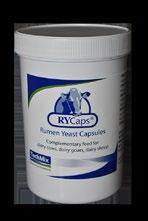

Product
When to use
With downer ewes suffering with milk fever (hypocalcemia).
Any downer ewes, those off feed, had a difficult lambing or have infection.
Any downer ewes, especially those who have suffered with twin lamb disease.
One capsule can be opened and added to water to be drenched or mixed with feed.
35ml drenched 3-4 times per day but can be effective at 2-3 times per day. Works really well, especially with the acetate and propionate proving energy, as well as the glucose.
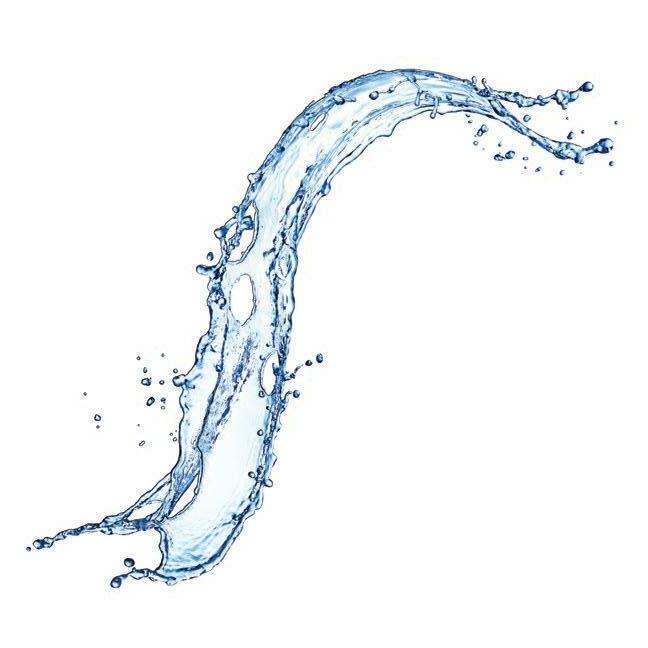
Third-generation farmer, Ifan Ritchie farms 1,500 ewes up on the hills in Conwy with his father, alongside 70 head of suckler cattle.
The flock at Blaen Y Coed is a mixture of mules and Welsh Mountain cross Derbyshire Gritstone to make the most of the different terrain and environments they have. They also have land in Anglesey and Cheshire to optimise the performance of the flock. Around 850 mules achieve 190 - 200% lambing percentage, with the majority of lambs supplied to Dunbia. “We are consistently hitting the weights and market specifications” Ifan comments, “the aim is to get the lambs gone by end of July”.
The remaining 650 ewes must suit the hill and upland ground, this is where the Welsh Mountain cross Derbyshire Gritstone ewes thrive. With these ewes, the lambing percentage is not quite as high, typically around 150%. “We would not expect higher due to their natural genetics and resilience needed for a mountain ewe, as long as we get a strong, healthy lamb from each ewe, we are happy,” Ifan comments.
Ifan and his father start lambing in February through to April, predominantly all inside. Around 6 weeks prior to lambing, the mules (being the less hardy of the breeds on the farm) are brought inside and fed according to the requirement through silage and NWF’s Ewetrition Rolls. “We have been on the rolls for many seasons now, and they are a solid compound which we trust.” These ewes are put to a Texel Beltex tup to get that commercial growth and animal which the market is demanding. “We have found that managing the ewes in this way promotes their milkiness, which is half the battle for strong lambs,” Ifan comments. “Looking after the ewe now will help her look after herself and her lamb” he adds.
Poor feeding of ewes pre-lambing brings multiple problems which are detrimental to the business. “Every sheep farmer has concerns about twin lamb, and it does happen from time to time at Blaen Y Coed, but it is minimal and cases are manageable,” Ifan comments.

In addition to making the most out of the natural resources with their flock converting grass to meat, the family have a water turbine converting rain and water into green energy. This energy is put back into the grid or used on the farm. “With all the rain we get in Wales, it only made sense to make the most of it!”.
For the future, Blaen Y Coed are wanting to retain similar ewe numbers with a focus on increasing efficiencies. They want to increase suckler cow numbers along with continuing to investigate ways of utilising other natural resources to increase the farm’s sustainability and resilience.
We wish the Ritchie family all the best for the future and want to give a Diolch yn Fawr for giving us an insight into their home and business.

During the last 6 weeks of pregnancy, 75% of foetal growth occurs which results in an increase in the ewes requirements for energy and protein. The biggest challenge in meeting this energy increase is lamb growth reducing space inside the ewe. This causes the ewe’s dry matter intake (DMI) to drop up to 30% resulting in a DMI as low as 1.4 kg (depending on ewe size), highlighting the importance of quality feed during this critical time.
If we get it wrong and twin lamb disease (TLD) occurs, it has a knock-on effect throughout the production cycle for both ewes and lambs; poor ewe health, poor lamb health, lower milk quality and quantity, lower growth rates, poor weaning weight, increased cost of creep feeds to reach target weight and then playing catchup on getting the ewes condition to target! If we look at TLD treatment alone, a typical “off the shelf” energy shot can cost in the range from £8-£15 per ewe. This cost excludes farmer time or the cost of milk replacer to bottle feed the lamb as most ewes milk drys up, usually, this is temporary but in extreme cases survival of both lamb and ewe can be compromised.
Although on a per tonne basis concentrated feed may look unattractive, when you look at a whole production cycle the investment for those ewes will help mitigate costs further during the year. Investing in feeding quality ewe feed now, will help meet the nutrition requirement of your ewes which will ultimately help your lamb crop and business profitability.

• Silage analysis changes as you work through a clamp, the same goes for baled silage. Sending silage samples from various bales and at regular intervals if you have clamp silage will help you understand the quality of your forage. Once you have the analysis, you can make informed feeding decisions. That may be feeding the best quality silage to twins and triplets, or feeding poorer quality silage earlier in pregnancy. It also allows you to optimise your purchased feeds.
• Have active discussions with your NWF sales specialist to ensure what you are feeding is suitable, or, look at what you used in the previous year and how your ewes performed. When they were weaned, how was ewe condition? Is this something you could have supported?
• Keep in mind protein; we talk a lot about energy in ewe rations, but protein is also important for milk yields and lamb growth. By knowing the forage nutrients, you can review what you need to meet requirements and minimise resource waste.
• Promote dry matter intakes through feed presentation and feed space.
• To optimise performance, ensure mineral supply meets requirements and ensure clean, fresh water is available.
• How do you know if you are getting it right? Blood samples, condition scoring ewes, colostrum quality testing and monitoring lamb growth rates are all key performance indicators.
Energy in ewe’s diets pre-lambing is always a point of discussion, but we must also consider the quality and quantity of protein as the demand for metabolisable protein (MP) rapidly increases in the last few weeks of lambing, and those ewes carrying multiple lambs cannot produce enough from forage alone to support requirements.
MP is important for rumen function, milk production and lamb growth. “Protein” can be split into two; rumen degradable protein which is broken down in the rumen and bypass protein/ digestible undegradable protein (DUP) which passes through the rumen, undigested.
There are several factors which determine the protein requirement, including weight, litter size and environment. Typically, a housed 70kg twin bearing ewe will need 93-126g/day of MP depending on how far off lambing she is. Research from Dr John Vipond, as well as continued application of his research on farms has shown that supplementation of high DUP feeds, such as soya bean meal and Ultra Soy, can result in heavier lambs, more colostrum, increase lamb vigour which all lead to fewer losses.
A high quality vegetable protein which, as a result of precise treatment of extracted soya bean meal, contains a high level of Digestible Undegradable Protein (DUP) (bypass protein). (MPE + MPN). For sheep rations include as part of ration according to level of production required.
A high quality rapeseed meal, manufactured to significantly increase the level of digestible DUP. The unique treatment process protects more protein from rumen breakdown, delivering more nutrients to the intestine allowing for greater ration efficiency.
NWF ewe feeds are carefully formulated to ensure they meet requirements and contain protected proteins to support that DUP element.

A young Cumbrian hill farmer is using advanced breeding technology to accelerate the genetic gain in his flock and become a top producer of Bluefaced Leicesters.
Aaron Troughton of Moors Farm, Sedbergh, runs a flock of just under 800 ewes across 670 acres of hill ground in Cumbria. Aside from selling commercial fat lambs, the biggest pay cheque of the year comes from selling Mule gimmer lambs for breeding. This means breeding from the best genetics is key.
Aaron had always dreamt of owning genetics from some of the top Bluefaced Leicester flocks in the country, however, with the top tups regularly selling for five-figure sums, it was something that was out of his price range. After spotting an in-lamb Bluefaced Leicester ewe with breeding from top genetics flocks Aaron took the leap and invested. Although he purchased her not knowing the sex of the lamb, in March 2019, she lambed a tup - the result Aaron wished for “The tup is our flock’s best getter. However, we wanted to get more ewes in lamb to him, so we looked into AI and flushing some of our ewes,” says Aaron.
“I contacted Will Barker at Castle Farm Vets and he agreed to artificially inseminate (AI) 80 of our 100 bought-in draft Swaledale ewes that year using fresh semen collected from the Jackpot tup. We used sponges that year and had 10 breaks to AI. Four were geld, but the rest wouldn’t hold.”
“We then got carried away with breeding Bluefaced Leicester’s, went to an in-lamb sale in 2020, and bought a third prize ewe for £2,000. We contacted Will again to AI another 100 Swales ewes, and he booked us in. We buy in 100 draft Swaledale ewes each year and, since using AI, now only buy from the same breeders.”
In 2020, Will encouraged them to use CIDR Ovis from Zoetis instead of sponges. “Will flushed the Bluefaced Leicester ewe that we’d bought for £2,000, and from that, we had eight live embryos. We then implanted them into Mules and synchronised the remainder of the 100 to AI using CIDR Ovis,” Aaron commented.

“
CIDR Ovis was a lot quicker to use, saving quite a bit of time. It’s like a five-second job to insert one, whereas inserting a sponge is a lot more complex and has a higher margin for error. Ewes were also a lot cleaner and we never lost any into the sheep or out of the sheep, as we did with the sponges. Out of the 100 ewes we used them on, eight came back in season, and five of these were geld. You can get more than that using tups for natural service,” adds Aaron.
By AI’ing using the best genetics, Aaron has been able to get more ewes in lamb from his one tup and benefit from the condensed lambing period synchronisation brings.
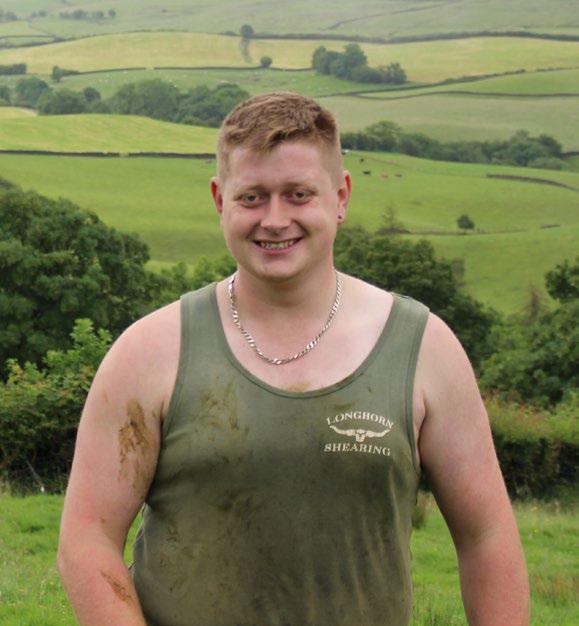
“This year, we had 100 ewes lamb in a week. This freed up shed space and then we could get it cleaned and ready for the next batch”.
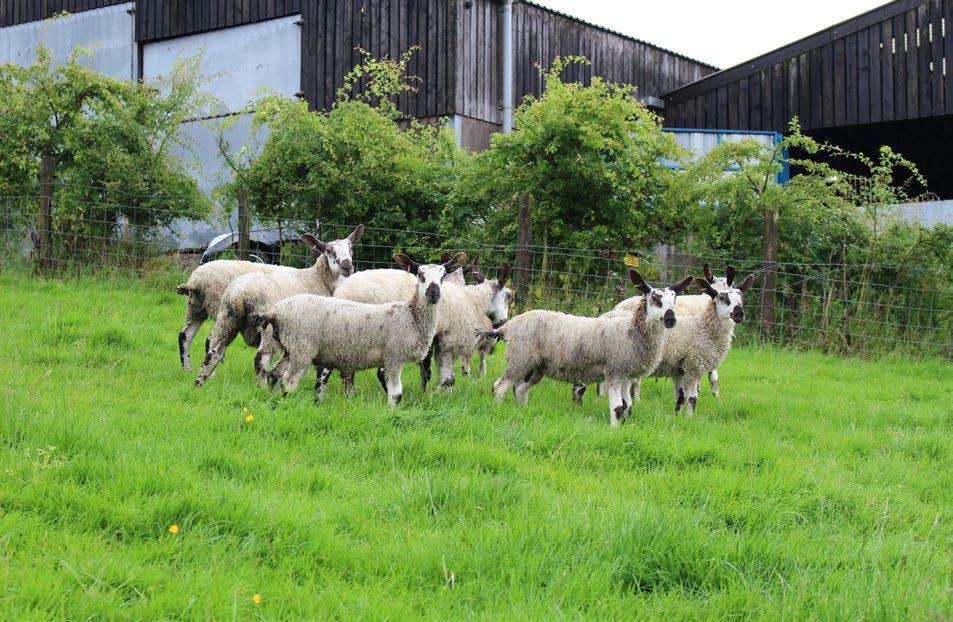
Vet Will Barker, Senior Clinical Director at Castle Farm Vets (CVS, Barnard Castle), says many of his clients now opt to use CIDR Ovis over sponges for several reasons:
1. Easier to manage timings. CIDRs must be removed 44-48 hours before AI, depending on whether fresh or frozen semen is used, compared to 52-56 hours for sponges.
2. Tighter synchronisation of oestrus.
3. Cleaner to use.
4. Higher retention rates.
“For those using sponges, this often means removing them in the middle of the night, which many don’t do for obvious reasons. That is probably one of the reasons we see better conception rates with CIDRs,” says Will Barker who also adds, “Sponges can create a smelly discharge, which isn’t pleasant and can indicate a mild infection. The plastic CIDRs don’t get this.”
Synchronising ewes has a place in many flocks, particularly when farmers have jobs off the farm and for those who want to target the early season lamb market. AI and natural service can be used on synchronised ewes. However, Mr Barker says increasing the tup to ewe ratio when using natural service with synchronisation is vital. He says: “The ideal is to have one tup for every 8-10 ewes and that the tups are fertility tested before use. Also, don’t put tups in with the ewes until 24 hours after the CIDRs are removed, as this could result in them being served before, they are fully in season.”
Ensuring ewes receive the correct mineral supplementation will influence ewe health and production, as well as lamb survival, vigour and growth rates. Often diets based on forage alone will be deficient in essential minerals, meaning implementing a responsible mineral strategy which meets mineral and vitamin requirements is essential to allow ewes to perform to their maximum potential.
Deficiency can occur in ewes without any obvious symptoms yet can be indicated by lower milk quality and yield, lighter lambs with reduced survival and growth rates as well as difficulties at lambing. All minerals and vitamins play key roles in various aspects of performance, health and welfare with table 1 highlighting some key minerals to consider in the success of your flock.
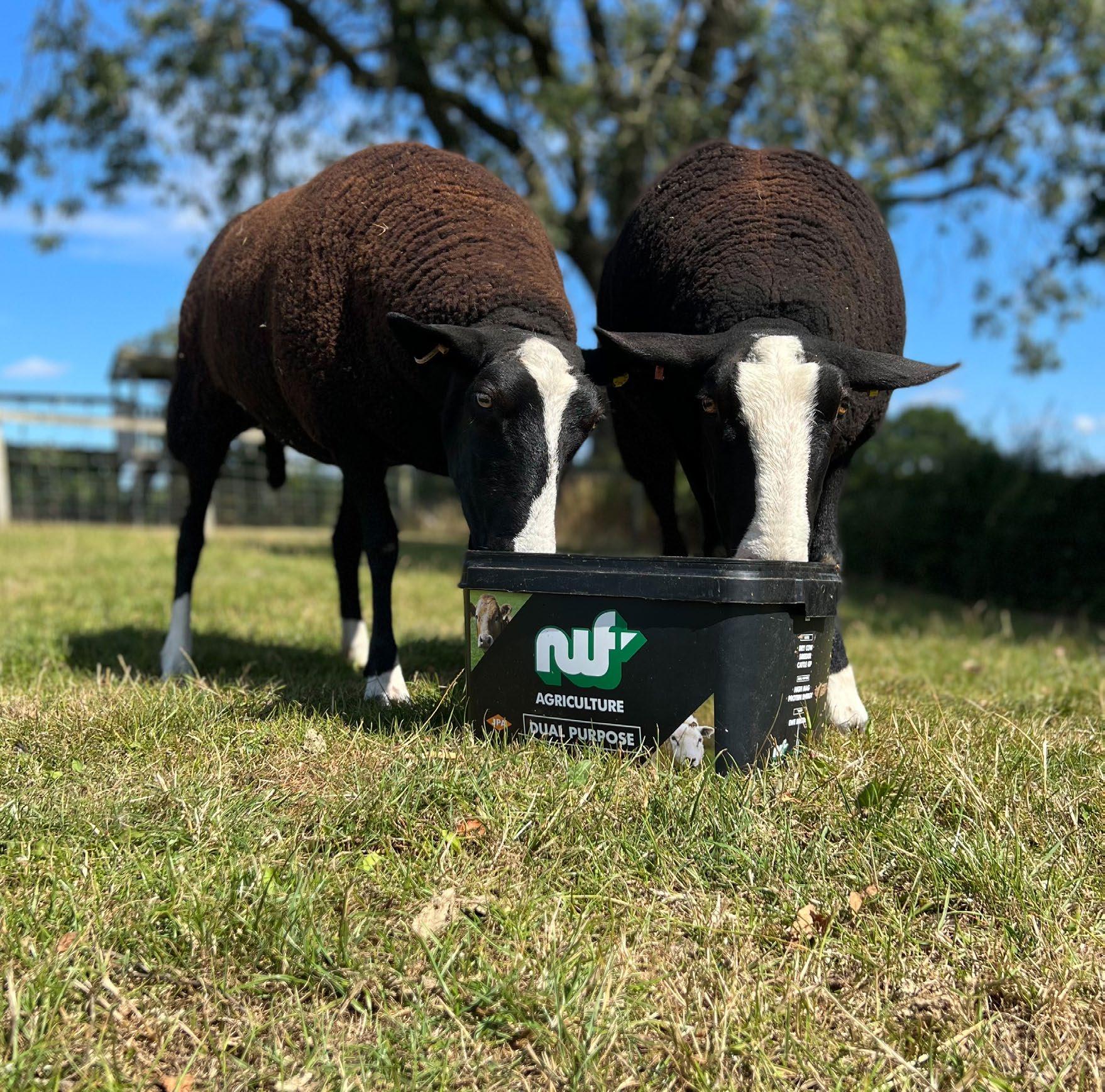
Zinc
Cobalt
Work together to support immunity and health. Also stimulate improved lamb vigour at birth and subsequent growth to weaning.
Has a role in thousands of enzymes in the body. Specifically helps support hoof and skin integrity and rate of wound healing.
Essential for ewes to produce vitamin B12 which is vital for energy production, also ensures lambs stand and suckle quickly
Iodine
Important for foetal development and is essential for energy production. Important for lambs at birth to reduce hypothermia risk.
Deficiency is linked to poor fertility and bone abnormalities in growing animals.
A responsible mineral strategy encompasses not only meeting those required levels, but also considering the source of mineral used in doing so. Minerals and vitamins are only of use to the animal when absorbed across the bloodstream, this is referred to as bioavailability. Around 90% of all minerals are fed from inorganic sources such as sulphates and oxides. Sulphates have low bioavailability due to being highly reactive in feed and the rumen meaning they bind to other nutrients, while oxides are largely insoluble meaning bioavailability can be low. Therefore, it is important to ensure mineral supplements contain more bioavailable sources where possible.
The NWF Agriculture mineral range is specifically formulated with a responsible mineral strategy in mind to provide optimal vitamin and mineral levels to meet the demands of pregnant ewes, to maximise lamb growth and survival and promote overall ewe health through the inclusion of:
• Zinc Intellibond as an alternative and more bioavailable source of Zinc which does not react in the rumen or the feed.
• Optimised levels of Vitamin E and Selenium for immune support.
o Inclusion of AO Mix and Optimin (Organic) Selenium for improved antioxidant capacity and support of the immune system.
• Vitamin and mineral levels that work to meet the true requirements of the ewe, taking into account the latest research.
Paying closer attention to the mineral and vitamin status of flocks can ultimately impact on overall performance and flock margins.
To review or discuss how to start your flock on a responsible mineral strategy speak to your local NWF Sales Specialist.
At NWF Agriculture we have a range of rolls, nuts, pellets and blends to suit your sheep enterprise and to utilise purchased and on-farm resources. Ewe and lamb feeds are formulated to combine the correct levels of energy and protein with appropriate levels of minerals and vitamins to optimise your flock’s health and performance.
• A high quality, energy dense starter diet. Contains a balance of energy and protein sources to boost live weight gain.
• Enables early marketing of lambs. Available in a 4mm pellet, 17% protein.
• Promotes a good, fast finish on store lambs allowing flexibility in marketing.
• Can be fed ad lib with straw or restricted in conjunction with forage.
• Super lamb is a 6mm nut, 15% protein.
• A palatable cost effective lamb diet, suitable for finishing.
• Suitable for housed or grazing lambs. 13% protein, available in 6mm nut.
• A balanced costeffective lamb diet, most suited to housed lambs on forage.
• Is also suitable to restrict feed to replacement females to encourage frame growth. 16% protein, available in a 6mm nut.

NWF Agriculture can arrange the purchase of Collinson Silos. The sales team can help advise on type, size and the finish of silo required for sheep feed storage. The most popular Collinson silos are the County S1, T1 & HS5 ranges.
 Fast Lamb Super Lamb Prime Lamb Lamb Pro
All Mills
All Mills Wardle & Wixland Mill Wardle Mill
Fast Lamb Super Lamb Prime Lamb Lamb Pro
All Mills
All Mills Wardle & Wixland Mill Wardle Mill
• The highest quality ewe compound, formulated to meet ewe requirements and promote colostrum quality.
• Using high quality ingredients this diet provides a balanced source of rumen energy and protein promoting rumen stability and health. 19% protein, high glucogenic levels.
• A high energy density feed specifically formulated to meet ewe requirements and promote colostrum quality.
• Ewetrition is formulated with high quality ingredients providing a balanced source of rumen energy and protein promoting rumen stability and health. This is a 19% protein diet with high glucogenic levels
• A high energy ewe feed.
• Balanced protein and energy sources to ensure a steady, even flow of nutrients to the ewe throughout a 24-hour feeding cycle.
• This is a 19% protein diet.
• Includes NWF’s protected proteins Ultra Soy and Ultra Pro-R, Protected fat, Soya and Maize.
• A high energy density feed specifically formulated to meet ewe requirements and promote colostrum quality.
• Raw materials including protected fat and high-quality by-pass protein to ensure optimal quality. 19% protein, high glucogenic levels.
• A tried and tested high energy ewe feed.
• Balanced energy and protein sources ensure a steady, even flow of nutrients to the ewe throughout a 24-hour feeding cycle. This is an 18% protein diet.
• Balanced in energy and protein. 18% Protein.
• Cost effective designed to promote milk yield.
• A good quality ewe diet.
• Balanced in energy and protein. 19% protein.
• Cost effective designed to promote milk yield.
In addition to compound feeds, specific blends can be formulated for your flock. Blends can offer the flexibility of straights yet have the requirement of only one storage bin. NWF bespoke formulations mean NWF sales specialists can provide a tailor-made feed plan unique to flock and system, see page 13.
Ewe Boost Nuts or Rolls Ewetrition Rolls 2 Good for Ewe Nuts & Rolls Wardle Wardle and Wixland Mill Longtown Mill Champion Nuts Classic Nuts Premium Nuts or Prime Rolls Good 4 Ewe Nuts or Rolls Wardle and Wixland Mill Wardle and Wixland Mill Wardle and Wixland Mill Longtown Mill
As sheep farmers face a squeeze on margins, NWF Agriculture can offer costeffective alternative sources of quality proteins.
NWF Ultra Pro-R, a rapeseed meal which has been treated to reduce the degradability of protein in the rumen, provides the ewes with a quality bypass protein. By treating rapeseed using a unique process, NWF have produced a feed that is an extremely cost effective source of quality protein that provides the ewes with high quality bypass protein.
NWF Ultra Pro-R has more quality bypass protein than soya but at a lower price, providing optimum performance and value in a balanced diet.
NWF Ultra Soy is high quality vegetable protein which, as a result of precise treatment of extracted soya bean meal, contains a high level of Digestible Undegradable Protein
(DUP) (bypass protein). The high quality protein source of Ultra Soy provides up to 80% of the crude protein content of 46% available as metabolisable protein from bypass protein (MPB).
The proven approach increases MPB supply without reducing the quality of amino acids supplied. Strict quality control standards ensure a consistent product with full traceability and guaranteed feed safety.

Ultra Pro-R Ultra Soy
Dry Matter (%) 88-90 88-90
Crude Protein (%) 34 46
ME (MJ/kg DM) 12.3 13.5
Bypass (MPB) (%) 75 80
NWF Ultra Pro-R and Ultra Soy are available in compounds and blends or delivered in one tonne totes for inclusion as part of home mixing.
Your local NWF Sales Specialist can formulate a nutrition programme with the inclusion of protected proteins to ensure you achieve a balanced diet.

NWF Agriculture can formulate specific blends for your flock making use of a wide variety of top-quality raw materials.
The use of blends in sheep feeding systems can offer significant benefits if you are looking to feed flocks a nutritionally balanced, cost-effective diet, while reducing the overall feed costs.

• Only one feed to store
• Only one product to mix in the diet
• Reduced cost of putting feed in front of ewes
• Time and labour saving
• Accurate inclusion of minerals etc, in the blend

Blends offer the flexibility of straights yet have the requirement of only one storage bin. NWF ’s bespoke formulations enable our sales specialists to provide a tailor-made feed plan, unique to each flock and system. The blends are accurately formulated and blended together in our fully UFAS approved production sites based in Cheshire, Cumbria and Devon.
NWF blends can be formulated to feature a range of feed supplements including highspecification minerals, Yea-Sacc, protected fats and our Ultra range. The Ultra range of protected soya, rape and wheat offer a more efficient absorption of protein or starch. Bypass protein is essential in late pregnancy and early lactation to ensure the right quality and quantity of colostrum and milk is available to lambs. Bypass starch provides high glucogenic levels which promote colostrum quality, critical for lamb survival and health.
Minerals and vitamins are essential components of all sheep diets. Minerals have many functions within ewes and lambs but imbalances, too high or too low, can cause problems. The NWF UltraMin mineral range is a convenient way of providing bio-available minerals, vitamins, and trace elements to livestock. Minerals are available in a powder or bucket form. In addition to the standard range bespoke minerals can be produced based on the results for a forage mineral assay.
Sheep General Purpose UltraMin Intensive Lamb • High levels of Vitamin B12 to reduce the risk of pine (cobalt availability). • High levels of Vitamin E are included to boost immunity. • General Purpose Sheep – 15-30g (F/A available). • Available in tote or 25kg.
• Ideal for home mixing based on adlib feeding • Formulated to reduce the risk of urinary calculi using Ammonium Chloride. • High levels of Vitamin E to ensure this product will work well with moist cereal-based diets, helping reduce the risk of muscle weakness in intensively fed lambs. • Lamb Finishing – 25kg/T. • Available in tote or 25kg.
A specifically formulated high quality protein and energy lick developed for ewes all year round.
For
spring: NWF High Mag A specifically formulated & developed high quality protein and energy feed tub suitable for grazing cattle and sheep.
A specifically formulated mineral and vitamin lick designed to reduce the risk of grass staggers in your livestock.
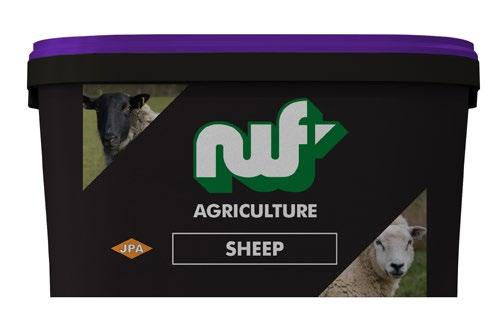
Whether it is mother’s milk or milk replacer, milk intake is crucial for the first 6 weeks of a lamb’s life, after this their reliance on grass increases.

Milkivit Energized Lamb Milk (ELM) has been designed to help lambs achieve their full growth potential. ELM is a precisely formulated lamb milk replacer, designed to be closer to ewe’s milk. ELM contains carefully selected milk products, highly digestible oils and proteins, plus a vitamin and mineral package to promote health and performance of growing lambs. It is available in skimmed milk (50%) or whey-based options.
• Improved energy density – digestible energy to support early life survivability, immune system support and DLWG.
• Optimal protein digestibility – this product contains 100% dairy protein for optimal protein digestion.
• Controlled osmolality – formulated with lower osmolality alongside careful advice on the concentration of the feed, to ensure gut integrity helping to decrease bloat and diarrhoea severity.
• Careful mineral & vitamin supplementation – inclusions have recently been reviewed to ensure the supply will meet requirements from a range of natural and synthetic Vitamin E, and by using Optimins (Fe, Mn, Zn and SeY).
• Cost consideration – typically ELM is more expensive per tonne, but it is less cost per litre due to the reduced mixing concentration, and therefore less per lamb to weaning.
This easy-mixing milk replacer is ideally suited to all bottle and ad lib lamb feeding systems. Milkivit Energized Lamb Milk should be introduced directly following on from colostrum feeding.
• Restricted feeding: Mix replacer at a concentration of 175g to make 1 litre (175g of replacer to 825ml of water). Mix at 420C and feed out at 38-40°C.
• Machine feeding: Calibrate the machine to feed at concentration of 175g per litre. Mix at 42°C and feed out at 38-40°C.
• Cool Ad-Lib feeding: Mix and feed at a concentration of 175g/litre (175g of replacer to 825ml of water).
Now is the ideal time to walk grass fields and inspect the quality of pastures. Use a field indexing system such as the Barenbrug Good Grass Guide to assess fields. This uses a 1-5 index similar to how farmer’s grade stock. Five being highly productive and a score of one for fields that need immediate action to get them back into productivity.
It is also an ideal time to assess the content of productive grasses in the swards and plan ahead to get the field in top shape for grazing and silage. It all starts with the soil, so for fields that haven’t been soil sampled in a while take samples for analysis and look at the results closely. pH values need to be at 6 for grass fields and closer to 6.5 for leys with clover in them. Fields with a pH of 5-5.5 will lose up to 40% of yield so this needs addressing as a priority.
Dig a soil pit to look for compaction and assess the rooting structure which should go 30cm deep in a perennial ryegrass sward. Take note of worm activity too as this is a good indicator of the overall health of the soil.
Compaction can be corrected using sward lifters or subsoilers as needed and should be set to go below any pans or compaction layers. Aerators will alleviate surface compaction and also allow air to get into the soil around the rooting zone. Aerators also increase surface drainage allowing fields to dry out quicker after heavy rainfall.
For fields that have a weed grass content of 30% plus think about reintroducing proactive species to the ley. This can be done by overseeding. The field will need to be grazed low and harrowed to remove any thatch and
weed grasses it will also create a tilth for the new seedlings. Use a specialist overseeding mixture that is designed to establish rapidly and boost production and one that is aggressive enough to establish alongside existing plants. If the sward is more than 70% weed grasses the field will need a complete reseed.
Choose a mix that is designed to meet the forage requirements of the field, so cutting, grazing or a dual purpose ley. A mix with heading dates that meet the needs of grazing system is key. All varieties in the NWF grass seed range have been rigorously tested under all conditions and only varieties that make it onto the recommended list are used in the NWF mixtures so you can be assured of using only the highest quality grass seed.
Roll after both overseeding and reseeding as a firm seedbed is paramount to the successful establishment of new sown grass seed.
When the establishing grass has emerged and is at the 3 leaf stage (approx 10cm high) graze lightly to encourage tillering and growth. Continue light grazing at frequent intervals with your lightest stock class until the plants are well established.
The 2023 grass mixture range from NWF includes short, medium and long term leys along with the leading Champion mixture available with or without clover.
Your local NWF sales specialist will be able to provide a grass mixture leaflet or call 0800 756 2787.

The aim of purchasing the Lleyn ewes was to become a closed flock to breed their own replacements and control disease. The family produce mainly cross lambs for the commercial market as well as ewe lambs for flock replacements.
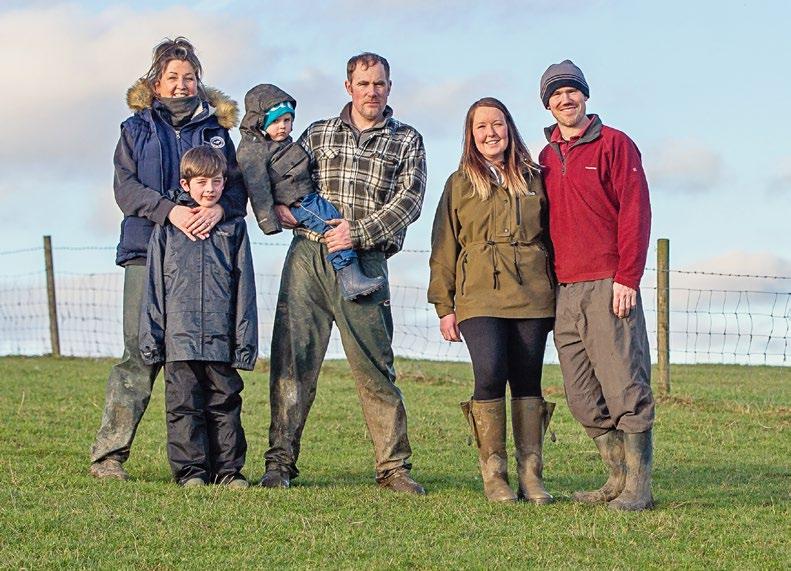
The flock is lambed from late March to early April and the ewes and lambs are turned straight out onto grass after lambing. Ewes scan around 220% and there are still some of the original purchased Lleyn ewes lambing at nine years old which highlights the longevity of the breed. The major improvement in the farm’s sheep enterprise is the number of lambs that are recorded at six weeks old to the number of ewes put to the ram.
“The weight of these lambs is a real eye-opener, they grow faster and reach target weights sooner from the Lleyn than the larger ewes that we previously kept. The Lleyn fits perfectly into our farming system, they are easy lambers with plenty of milk enabling the lambs to be sold off the ewes before the grass becomes less mid-summer onwards,” comments Michael Ridley.
A Texel and Texel x Beltex rams are used as a terminal sire on the majority of the flock which allows the farm to produce prime lambs which are sold at 42-45kg. From the quality of the Lleyn ewe, concentrate usage is optimised without compromising health, which helps purchased feed costs as well as the vet bill! The remainder of the flock are put to a Lleyn ram which enables pure replacements to be bred and to be entered into the breeding flock.
Michael concludes, “We are very pleased and impressed with the performance of our Lleyn flock and would have no hesitation in recommending the Lleyn breed to anyone thinking of using it in their sheep farming enterprises.”
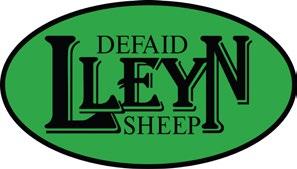

Have you heard about Medicine Hub? It is an industry-wide initiative that is setting out to gather antibiotic use data from cattle and sheep enterprises in the UK. Medicine Hub was developed by AHDB and has been supported by industry representative organisations, milk buyers, food processors, retailers and the veterinary profession.


“Producers in the UK adhere to some of the most rigorous and robust production standards around, and work hard to achieve high levels of health and welfare as well as low antibiotic use, something the industry is rightly proud of,” says vet Mandy Nevel, head of animal health and welfare at AHDB and who has been instrumental in the development of Medicine Hub.
“Even though individual farms must record medicine use until now there has been no central online resource for doing so at a national level, something that is set to change with Medicine Hub. And it’s worth noting that, even if you have used no antibiotics in the last calendar year, this information is important to capture,” she adds.
Vets together with farmers, set ambitious targets for antibiotic use that have been adopted by RUMA (Responsible Use of Antibiotics in Agriculture alliance) targets task force.
“Of course, antibiotics have a role in managing the health of animals and should be used appropriately. We really need to understand what is being used and what rate and in which categories of animal; Medicine Hub will provide this facility,” Dr Nevel explains.
Mandy Nevel adds, “We are often asked by farmers about the data – who gets to see it, where is it shared and so on. Data always belongs to the farmer. The farmer can choose to give permission for the vet or any other holder of data to upload it on their behalf. At all times, the farmer remains in complete control of who can and cannot see their data. Medicine Hub will only publish anonymised data.”
Medicine use data are often transferred on to Medicine Hub via vet practice’s computer records or by a bulk data holder, perhaps a third party that an assurance scheme or supply chain works with, once the appropriate permissions have been granted.

Bryan and Liz Griffiths farm over 300 acres in North Devon with a flock of 850 Mule and Suffolk cross alongside 30 finishing cattle. Bryan, a former chairman and now vice president of the National Sheep Association (NSA), also sits on the AHDB beef and lamb sector council.

“Producers work hard to achieve high levels of health and welfare as well as responsible antibiotic use, but until now, there has been no central resource for building a picture of antibiotic use at a national level,” Bryan says.
“
Of course, we do get some disease, who doesn’t? And we treat as and when needed,” Bryan explains. “Like many sheep producers, our main issues are around lameness especially contagious ovine digital dermatitis (CODD), occasional pink eye, but we adhere to the principle of ‘as much necessary but as little as possible.”
“This ongoing development of Medicine Hub will aid the defence of the livestock sector’s reputation and help protect antibiotics for human use in the future,” adds Bryan.
For more information, visit www.medicinehub.org.uk. There is also information online explaining how to start and what to do if you want your vet, software provider or other data holder to share data on your behalf. Further support is available by emailing medicinehub@ahdb.org.uk or calling 02477 719 414.
The Register of Sheep Advisers (RoSA) offers an opportunity to independent sheep consultants, nutritionists, vets and technical specialists to demonstrate that they have comprehensive knowledge across all aspects of sheep production and signifies a commitment to professional development through structured CPD.
As sheep farming continues to change, along with the rest of the agricultural industry, there is an increasing need for sheep advisers who can provide valuable advice and RoSA provides the assurance that the advice farmers are getting is credible.
RoSA provides access to personal development and training so that members can continue to support UK sheep farmers with the best and most appropriate advice to meet their business needs.
Through the RoSA website, using the find an adviser facility, sheep farmers can find a reliable source of advisers that they can contact if they are seeking on farm guidance.
Those interested in becoming a RoSA member can sign up on the RoSA website, www.sheepadvisers.co.uk or for more information please email sheepadvisers@basis-reg.co.uk
